Description
The Tank Bred Orchid Dottyback, Pseudochromis fridmani, is a small and vibrant fish with a maximum size of about 3 inches (7.6 cm). It has an elongated body and a characteristic purple colouration that is truly eye-catching. The entire body is covered in a rich shade of purple, which gives it a striking appearance. The dorsal fin and tail fin may have a contrasting yellow or orange colouration, adding to its beauty. Overall, the Orchid Dottyback is a visually appealing fish that can be a great addition to a reef aquarium.
Natural Habitat:
In its natural habitat, the Orchid Dottyback is typically found in the Red Sea. It inhabits shallow coral reefs and lagoons, often seeking shelter among corals and rocky outcrops. These areas provide them with plenty of hiding places and potential hunting grounds for their small prey. The warm waters of the Red Sea provide the ideal environment for this species to thrive, with suitable temperatures and water conditions. These Orchid Dottybacks are Tank Bred.
Keeping Tank Bred Orchid Dottyback Healthy:
The care level for the Orchid Dottyback is considered moderate. While they are relatively hardy, they can be a bit on the delicate side, requiring stable water parameters and good husbandry practices. It is important to maintain the water temperature between 72-78°F (22-26°C) and a pH range of 8.1-8.4. The tank should have plenty of hiding places, such as live rock or coral structures, to provide security for the fish. Regular water testing and appropriate filtration are necessary to ensure optimal water quality.
Special Requirements and Feeding:
Orchid Dottybacks have a carnivorous diet and prefer meaty foods. They should be offered a variety of small, high-quality foods, such as small pieces of shrimp, krill, or fish, as well as frozen or pellet foods formulated for carnivorous fish. It is important to provide regular feedings to ensure their nutritional needs are met. Additionally, adding vitamin supplements to their diet can contribute to their overall health and colouration.
How Many Should I Keep?
It is recommended to keep only one Tank Bred Orchid Dottyback per tank, as they can be territorial and aggressive towards other fish of the same species or similar appearance. Keeping multiple individuals may result in aggressive behaviour and potential harm to tank mates. It’s best to provide them with their own space and territory to avoid conflicts.
Lighting Preference:
Orchid Dottybacks do not have specific lighting preferences. They can adapt well to a variety of lighting conditions commonly found in reef aquariums. Providing a suitable lighting spectrum that promotes the growth of corals and other photosynthetic organisms in the tank will also benefit the overall health and well-being of the fish.
Suitable Tank Mates:
When selecting tank mates for the Tank Bred Orchid Dottyback, it is important to choose peaceful and non-aggressive species. Avoid keeping them with other Dottybacks or similar-looking fish to prevent territorial conflicts. Compatible tank mates may include peaceful reef fish such as small gobies, dartfish, or blennies. It is crucial to monitor their behaviour and ensure that all tank inhabitants are thriving without any signs of stress or aggression.
Breeding Pseudochromis fridmani:
Breeding orchid dottybacks in captivity can be challenging, as they are known to be delicate fish. However, with the right conditions, it is possible to successfully breed them.
- Introducing a pair
One important factor to consider when breeding orchid dottybacks is the size of the breeding pair. They should be roughly the same size, and ideally, they should be introduced to each other while they are still juveniles to allow them to form a pair bond.
- The eggs
Orchid dottybacks are egg layers and will typically lay their eggs on the walls of a suitable breeding cave. The male will guard the eggs, fanning them with his fins to keep them oxygenated. The eggs usually hatch after about a week, and the fry will become free-swimming after a few more days.
- Shelter
It is important to provide the breeding pair with a suitable cave for egg laying. The cave should be large enough to accommodate both the male and female, and it should be placed in a location in the tank where it will receive good water flow.
- Feeding
Feeding the breeding pair a varied and nutritious diet is also important for successful breeding. Live or frozen foods such as brine shrimp, copepods, and mysis shrimp can help to condition the fish and encourage spawning.
Once the fry have hatched and become free-swimming, they can be fed newly hatched brine shrimp or other small live foods. It is important to maintain good water quality and provide the fry with plenty of hiding places to reduce stress and prevent aggression from other tank inhabitants.
- Summary
Breeding orchid dottybacks can be a rewarding experience for the dedicated aquarist, but it is important to be prepared for the challenges involved and to provide the fish with the right conditions and care.
Sexual Dimorphism:
There is no significant sexual dimorphism in Orchid Dottybacks. Both males and females share the same vibrant purple coloration and body shape.
Distribution:
The Orchid Dottyback is native to the Red Sea. These particular fish are captive breed.
Summary:
The Tank bred Orchid Dottyback, scientifically known as Pseudochromis fridmani, is a captivating fish. These fish naturally occur in the Red Sea. With its striking purple colouration, it adds a vibrant touch to a reef aquarium. While they are a bit on the delicate side in terms of care level, providing stable water parameters, suitable tank mates, and a varied diet can help ensure their health and well-being. Keep in mind their territorial nature and potential aggression towards similar-looking fish. While breeding Orchid Dottybacks can be challenging, successful attempts have been reported with proper setup and conditions. Overall, this species offers beauty and interest to marine enthusiasts.
The Fish pictured here are representative only and the livestock you receive may vary in pattern, coloration, and shape.

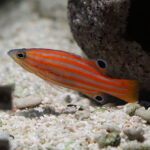
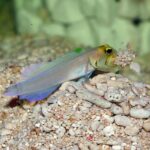
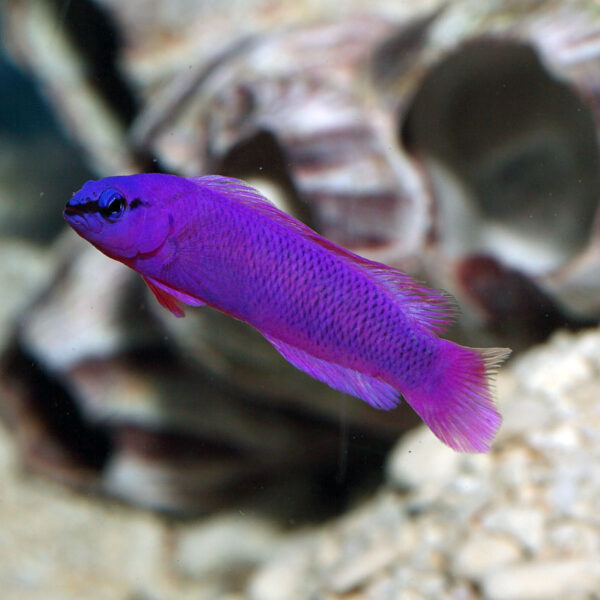



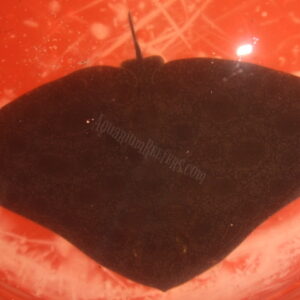
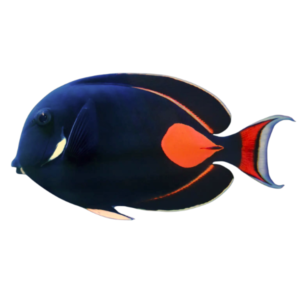
Reviews
There are no reviews yet.